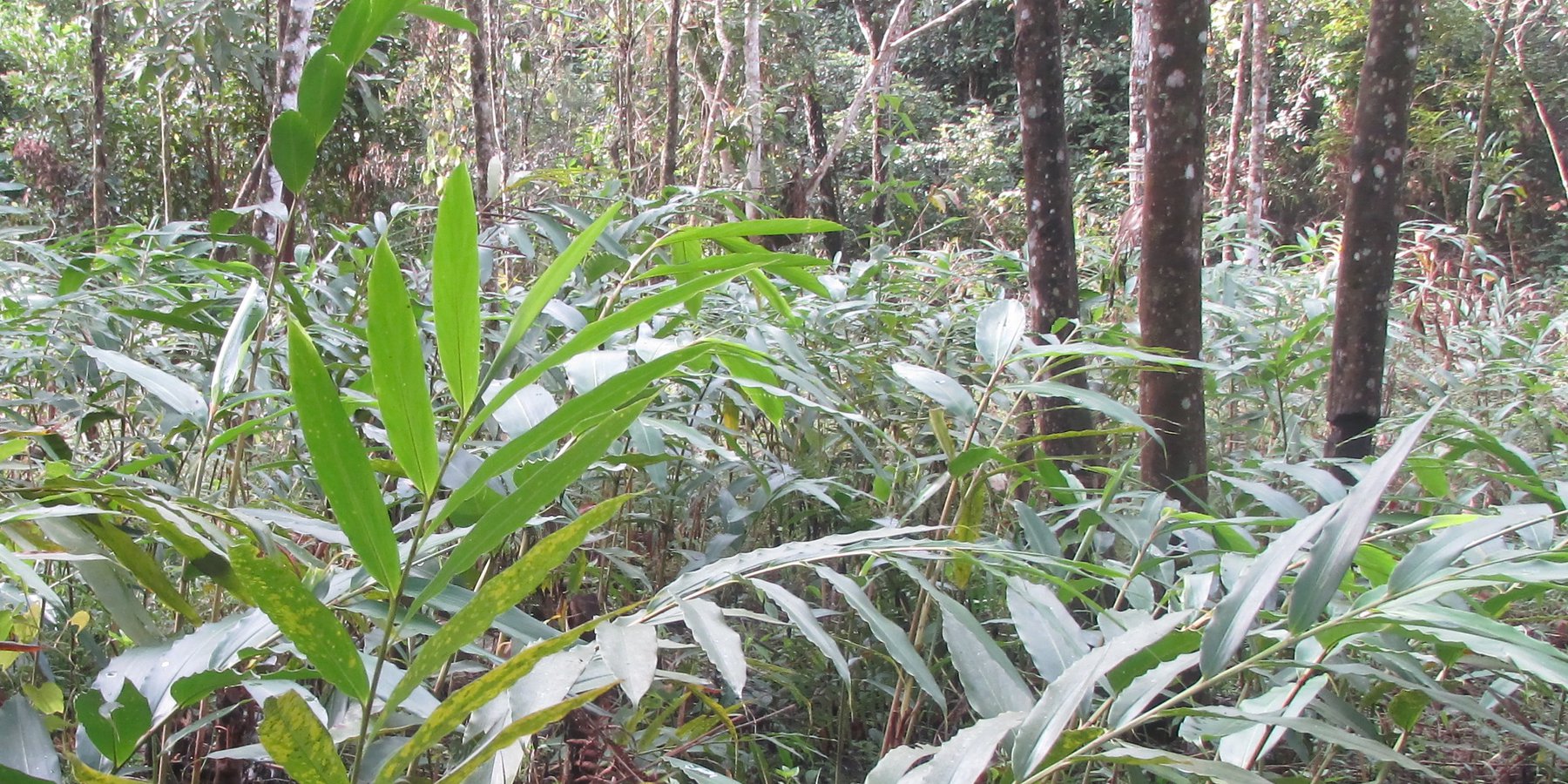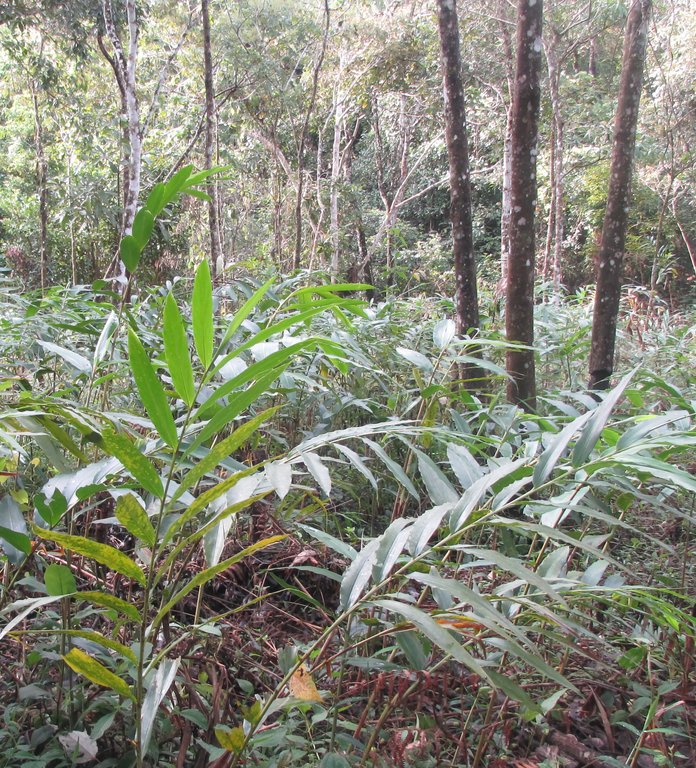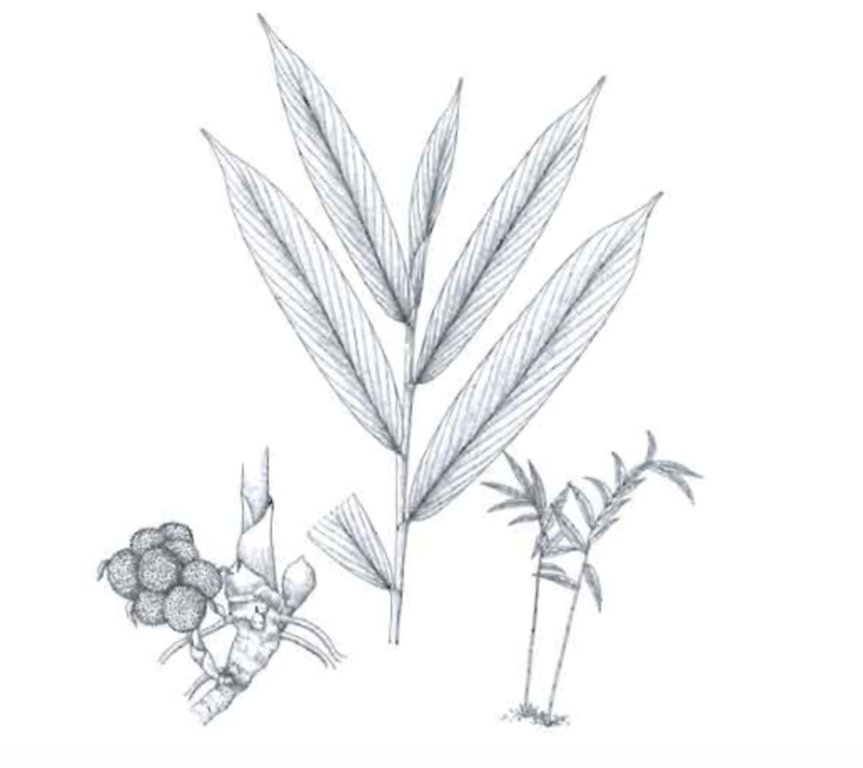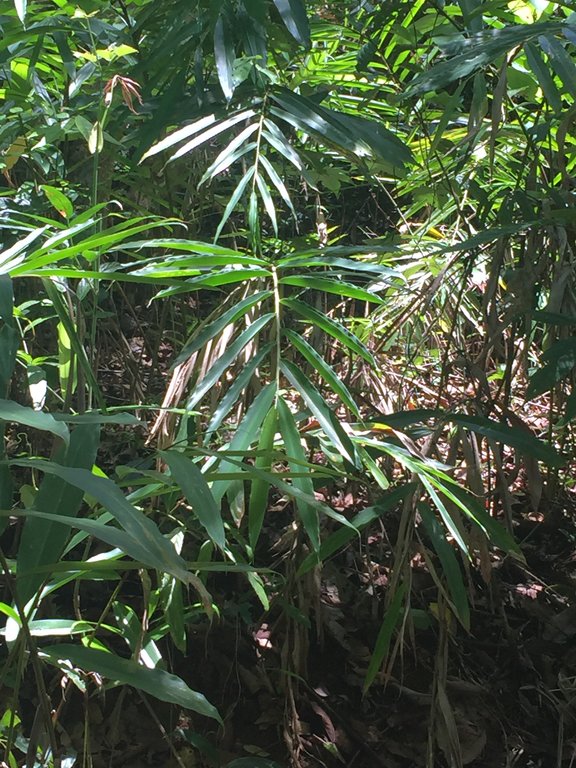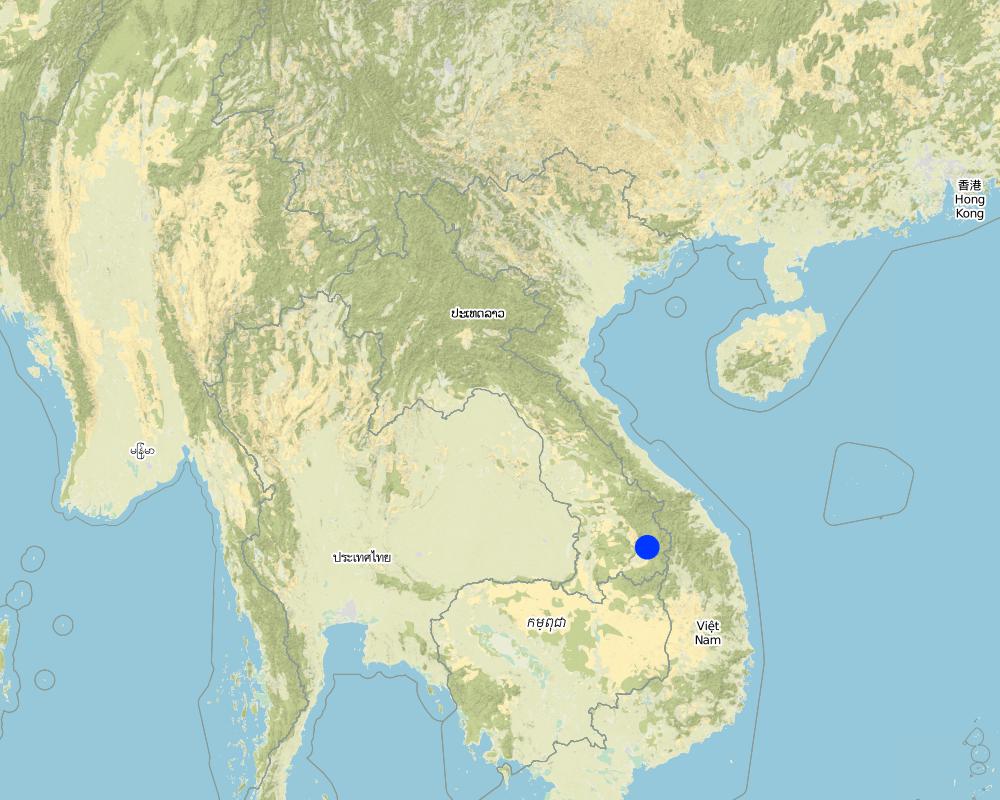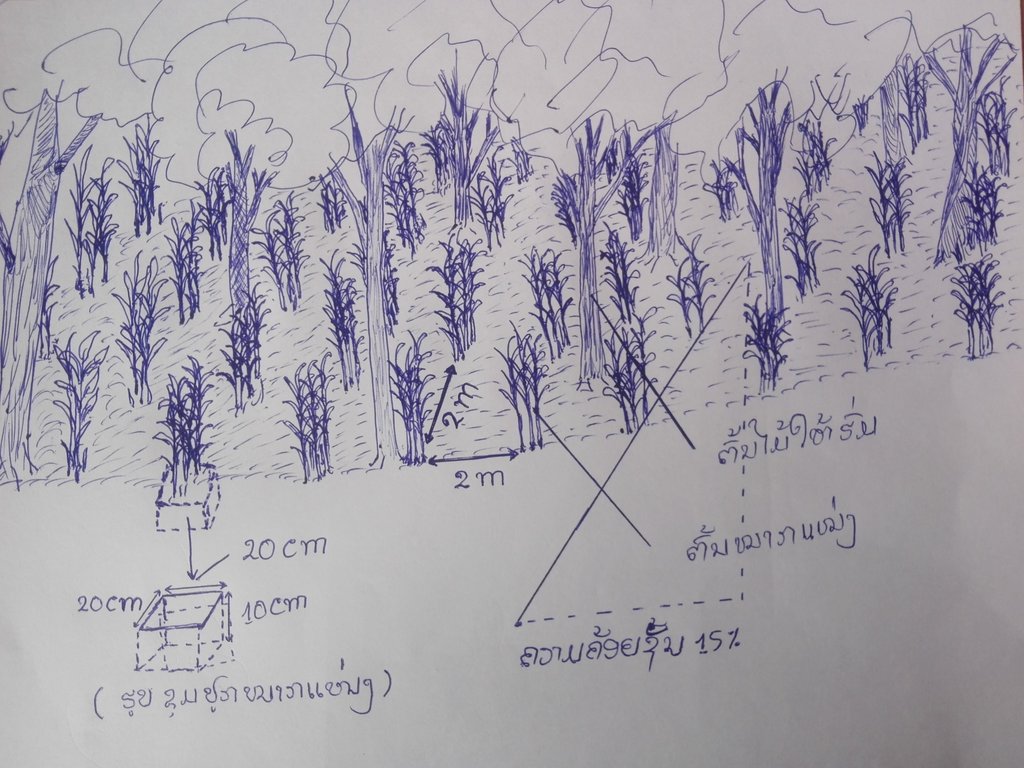Wild cardamom plantation for sustainable forest management [Lao People's Democratic Republic]
- Creation:
- Update:
- Compiler: Bounthanom Bouahom
- Editors: Bounthanom Bouahom, sinnilong vongkhamchanh
- Reviewers: viengsavanh phimphachanhvongsod, Nicole Harari, Stephanie Jaquet, Alexandra Gavilano
technologies_2237 - Lao People's Democratic Republic
View sections
Expand all Collapse all1. General information
1.2 Contact details of resource persons and institutions involved in the assessment and documentation of the Technology
Key resource person(s)
land user:
ຜູ້ສັງລວມຂໍ້ມູນ:
Souvanchieng Bouathong
Lao People's Democratic Republic
ບຸດດາທົນ ບົວທອງ
ເປັນປະຊາຊົນ
Lao People's Democratic Republic
Name of project which facilitated the documentation/ evaluation of the Technology (if relevant)
Scaling-up SLM practices by smallholder farmers (IFAD)Name of the institution(s) which facilitated the documentation/ evaluation of the Technology (if relevant)
National Agriculture and Forestry Research Institute (NAFRI) - Lao People's Democratic Republic1.3 Conditions regarding the use of data documented through WOCAT
The compiler and key resource person(s) accept the conditions regarding the use of data documented through WOCAT:
Yes
1.4 Declaration on sustainability of the described Technology
Is the Technology described here problematic with regard to land degradation, so that it cannot be declared a sustainable land management technology?
No
2. Description of the SLM Technology
2.1 Short description of the Technology
Definition of the Technology:
Cardamom planting is a non timber forest product. Wild cardamom planting take place in traditional agroforestry systems based on shifting agriculture. The objectives of this technologies are to reach sustainable forest use and to generate household income.
2.2 Detailed description of the Technology
Description:
Wild cardamom (Amomum subulatum) is a non-timber forest product (NTFP) that grows naturally in South Asia at elevations between 600 and 1.200 meters under the canopy of humid tropical forests (average temperature between 15-25 °C, PH level between 5,5- 6,5). In Laos, completely wild cardamom is still found in mountainous secondary forest at an elevation upwards of 700 meters, mainly near watercourses. In the past, it was commonly found by local people but never harvested or used. However, the international demand for cardamom began in 2000, and increased dramatically since then. This encouraged an increasing number of local villagers to collect cardamom from natural forest areas for sale to generate income for their households. This, however, caused depletion of cardamom in forest areas and also created conflicts among the people. Hence, the village people started to collect cardamom seedlings from the forest to cultivate them in their own upland fields, where farmers used to have upland rice cultivation before. Normally after rice harvest, they planted wild cardamom seedlings and led them grow up thogether with other wild plants and trees. It was treated as a kind of fallow. As a result of the domestication they were able to save time compared to the collection of wild cardamom in the forest. In 2002 it is estimated that two third of the harvest came from plantations. Cardamom cultivation on former fallow fields does not require significant investments – only hoes, knifes, and bags for collecting natural cardamom seedlings. One hectare of land requires around 15 days of seedling collection in the forest. The selected seedlings should reach an appropriate maturity (dark green leaves with 1 to 2 yellow leaves, height of stem about 1 to 2 meters) that promotes stem production, ensures high survival rate during transportation, and tolerates new environmental conditions at the planting site. Then, cardamom seedlings need to be replanted at latest two days after collection in the prepared plot. Typically, people plant cardamom during June – July with the beginning of wet season. Before in May, bush clearance is needed, but higher trees should be preserved at approximately 40 percent to provide a canopy for the required shadow to the cardamom. Vegetation removal necessitates observation and background knowledge of the individual land user. Cardamom planting should be established in lines and rows as follow: the space between the rows is 1 meter and 1.2 meters between the lines. The planting holes for the cardamom seedlings are 20 x 20 cm and 10 to 15 centimetres in depth. The space between the plants is 2 x 2 m, which facilitates the accessibility during weeding, maintenance, and harvest. It is recommended that farmers should plant three seedlings per hole. On average, there will be 2,500 holes/ha that requires a total of 7,500 seedlings per hectare. After that, fertile soil should be applied to refill the holes by moderate feet pressure at the end. Most farmers don’t use manure or fertilizers in their cardamom cultivations. Maintenance requires mainly the thinning of some tree branches to provide adequate sunlight as required by the cardamom plants. This can be implemented once a year after harvest. Cardamom plants provide fruits within four years after planting. During the establishment period till the first harvest the farmer’s workload increases as they have to collect still wild cardamom in the forests as well. Harvesting can be carried out annually during August – September with an average production of 320 kg per hectare for dried cardamom and approximately 578 kg of fresh cardamom. The market demand for this kind of cardamom is high, because it is internationally requested as medicinal product. Therefore, the local people are satisfied with the selling price offered by middle men who buy the production at 70,000 Kip/kg. Benefits from cardamom plantation include more income for local people, increase in forest cover, stabilization of slash and burn shifting cultivation and less impacts on agricultural lands. In addition, cardamom plantations help balancing the ecosystem and provide natural habitats for various animal and plant species.
2.3 Photos of the Technology
2.5 Country/ region/ locations where the Technology has been applied and which are covered by this assessment
Country:
Lao People's Democratic Republic
Region/ State/ Province:
Attapue province
Further specification of location:
Xayxay district
Specify the spread of the Technology:
- evenly spread over an area
If precise area is not known, indicate approximate area covered:
- < 0.1 km2 (10 ha)
Map
×2.6 Date of implementation
Indicate year of implementation:
2010
If precise year is not known, indicate approximate date:
- less than 10 years ago (recently)
2.7 Introduction of the Technology
Specify how the Technology was introduced:
- through land users' innovation
3. Classification of the SLM Technology
3.1 Main purpose(s) of the Technology
- conserve ecosystem
- preserve/ improve biodiversity
- create beneficial economic impact
3.2 Current land use type(s) where the Technology is applied

Cropland
- Tree and shrub cropping
Number of growing seasons per year:
- 1
3.4 Water supply
Water supply for the land on which the Technology is applied:
- rainfed
3.5 SLM group to which the Technology belongs
- agroforestry
- ecosystem-based disaster risk reduction
3.6 SLM measures comprising the Technology

vegetative measures
- V1: Tree and shrub cover

management measures
- M1: Change of land use type
3.7 Main types of land degradation addressed by the Technology

biological degradation
- Bh: loss of habitats
- Bq: quantity/ biomass decline
3.8 Prevention, reduction, or restoration of land degradation
Specify the goal of the Technology with regard to land degradation:
- prevent land degradation
4. Technical specifications, implementation activities, inputs, and costs
4.1 Technical drawing of the Technology
Technical specifications (related to technical drawing):
- The land users prepare land during 5 days in May (selected cutting of trees and shrub)
- During June to July, when wet season starts, the cardamom seedlings are collected in the forest. To cover 1 hectare 2 persons have to collect during 15 days (during the time cardamom is flowering). The land users select mature cardamom seedlings of (1 to 2 meters in height).
- Planting holes are 20 x 20 cm, depth 10-15 cm, planting distance is 2 x 2 meters and per hole 3 seedlings are planted (2500 trees/ha).
- Cardamom here is cultivated at a slope rate of 15%. No fertilizers were in use in the example of this case study.
Author:
Sinnalong Vongkhamchan
Date:
13/05/2017
4.2 General information regarding the calculation of inputs and costs
Specify how costs and inputs were calculated:
- per Technology area
Indicate size and area unit:
1
If using a local area unit, indicate conversion factor to one hectare (e.g. 1 ha = 2.47 acres): 1 ha =:
hactare
other/ national currency (specify):
LAK
If relevant, indicate exchange rate from USD to local currency (e.g. 1 USD = 79.9 Brazilian Real): 1 USD =:
8000.0
Indicate average wage cost of hired labour per day:
50.000
4.3 Establishment activities
| Activity | Timing (season) | |
|---|---|---|
| 1. | Clearing soil from bushes and weeds | April to May (before rain) |
| 2. | Thining of tree branches | Before planting |
| 3. | Collecting of cardamom seedlings | June to July |
| 4. | Planting | July |
4.4 Costs and inputs needed for establishment
| Specify input | Unit | Quantity | Costs per Unit | Total costs per input | % of costs borne by land users | |
|---|---|---|---|---|---|---|
| Labour | Labour for land preparation | person day | 10.0 | 50000.0 | 500000.0 | 100.0 |
| Labour | Labour for collection of seedlings | person day | 30.0 | 50000.0 | 1500000.0 | 100.0 |
| Labour | Labour for planting | person day | 10.0 | 50000.0 | 500000.0 | 100.0 |
| Equipment | Knief | piece | 3.0 | 60000.0 | 180000.0 | 100.0 |
| Equipment | Shovel | piece | 3.0 | 80000.0 | 240000.0 | 100.0 |
| Equipment | Blasket for cardamom tree | piece | 3.0 | 150000.0 | 450000.0 | 100.0 |
| Equipment | Bag | piece | 30.0 | 2500.0 | 75000.0 | 100.0 |
| Fertilizers and biocides | Manure | kg | 2500.0 | 300.0 | 750000.0 | 100.0 |
| Total costs for establishment of the Technology | 4195000.0 | |||||
| Total costs for establishment of the Technology in USD | 524.38 | |||||
4.5 Maintenance/ recurrent activities
| Activity | Timing/ frequency | |
|---|---|---|
| 1. | Weeding | March to April |
| 2. | Use manure | September after harvesting |
| 3. | Harvesting | August to September |
4.6 Costs and inputs needed for maintenance/ recurrent activities (per year)
| Specify input | Unit | Quantity | Costs per Unit | Total costs per input | % of costs borne by land users | |
|---|---|---|---|---|---|---|
| Labour | Labour for weeding | person day | 10.0 | 50000.0 | 500000.0 | 100.0 |
| Labour | Labour to use manure | person day | 10.0 | 50000.0 | 500000.0 | 100.0 |
| Labour | Labour for harvesting | person day | 10.0 | 50000.0 | 500000.0 | 100.0 |
| Fertilizers and biocides | Manure | kg | 300.0 | 2500.0 | 750000.0 | 100.0 |
| Total costs for maintenance of the Technology | 2250000.0 | |||||
| Total costs for maintenance of the Technology in USD | 281.25 | |||||
4.7 Most important factors affecting the costs
Describe the most determinate factors affecting the costs:
Labour and cost for manure are the most important factors.
5. Natural and human environment
5.1 Climate
Annual rainfall
- < 250 mm
- 251-500 mm
- 501-750 mm
- 751-1,000 mm
- 1,001-1,500 mm
- 1,501-2,000 mm
- 2,001-3,000 mm
- 3,001-4,000 mm
- > 4,000 mm
Indicate the name of the reference meteorological station considered:
District of Agriculture and Forestry Office in Xanxay district
Agro-climatic zone
- sub-humid
5.2 Topography
Slopes on average:
- flat (0-2%)
- gentle (3-5%)
- moderate (6-10%)
- rolling (11-15%)
- hilly (16-30%)
- steep (31-60%)
- very steep (>60%)
Landforms:
- plateau/plains
- ridges
- mountain slopes
- hill slopes
- footslopes
- valley floors
Altitudinal zone:
- 0-100 m a.s.l.
- 101-500 m a.s.l.
- 501-1,000 m a.s.l.
- 1,001-1,500 m a.s.l.
- 1,501-2,000 m a.s.l.
- 2,001-2,500 m a.s.l.
- 2,501-3,000 m a.s.l.
- 3,001-4,000 m a.s.l.
- > 4,000 m a.s.l.
Indicate if the Technology is specifically applied in:
- not relevant
5.3 Soils
Soil depth on average:
- very shallow (0-20 cm)
- shallow (21-50 cm)
- moderately deep (51-80 cm)
- deep (81-120 cm)
- very deep (> 120 cm)
Soil texture (topsoil):
- medium (loamy, silty)
Soil texture (> 20 cm below surface):
- fine/ heavy (clay)
Topsoil organic matter:
- low (<1%)
5.4 Water availability and quality
Ground water table:
> 50 m
Availability of surface water:
medium
Water quality (untreated):
poor drinking water (treatment required)
Is water salinity a problem?
No
Is flooding of the area occurring?
No
5.5 Biodiversity
Species diversity:
- medium
Habitat diversity:
- medium
5.6 Characteristics of land users applying the Technology
Sedentary or nomadic:
- Sedentary
Market orientation of production system:
- commercial/ market
Off-farm income:
- less than 10% of all income
Relative level of wealth:
- rich
Individuals or groups:
- individual/ household
Level of mechanization:
- manual work
Gender:
- women
- men
Age of land users:
- youth
- middle-aged
5.7 Average area of land used by land users applying the Technology
- < 0.5 ha
- 0.5-1 ha
- 1-2 ha
- 2-5 ha
- 5-15 ha
- 15-50 ha
- 50-100 ha
- 100-500 ha
- 500-1,000 ha
- 1,000-10,000 ha
- > 10,000 ha
Is this considered small-, medium- or large-scale (referring to local context)?
- medium-scale
5.8 Land ownership, land use rights, and water use rights
Land ownership:
- individual, not titled
Land use rights:
- individual
- Rain
5.9 Access to services and infrastructure
health:
- poor
- moderate
- good
education:
- poor
- moderate
- good
technical assistance:
- poor
- moderate
- good
employment (e.g. off-farm):
- poor
- moderate
- good
markets:
- poor
- moderate
- good
energy:
- poor
- moderate
- good
roads and transport:
- poor
- moderate
- good
drinking water and sanitation:
- poor
- moderate
- good
financial services:
- poor
- moderate
- good
6. Impacts and concluding statements
6.1 On-site impacts the Technology has shown
Socio-economic impacts
Income and costs
farm income
Comments/ specify:
Before the farmer did not cultivate cardamom on the fallow area.Thus, the farm income increased by selling the cardamom.
diversity of income sources
Comments/ specify:
Increase income from Cardamom because before farmers did not collected cardamom for commercial
Cardamom plantations under the forest canopy generate an additional income source.
workload
Comments/ specify:
Famers have now their own cardamom fields near the villages. And hence, this not anymore needs searching the natural forest after wild cardamom which is time consuming.
Socio-cultural impacts
conflict mitigation
Comments/ specify:
Conflictual situations decreased because farmers have now their own cardamom fields.
Ecological impacts
Soil
soil moisture
Biodiversity: vegetation, animals
plant diversity
Comments/ specify:
Increase in local mushrooms and moss.
invasive alien species
Comments/ specify:
Increase in number of snakes and mosquitos.
habitat diversity
Comments/ specify:
Increased in earthworms, milli pest and bug.
6.2 Off-site impacts the Technology has shown
impact of greenhouse gases
Comments/ specify:
Better protection of the natural forests, as cultivated cardamom produces satisfactory yields for around 15 years. Thus, long fallow period normally needed for rice cultivation on the same plot can be compensated. Less frequent forest burning, less aerosols and stalilization of forest area.
6.3 Exposure and sensitivity of the Technology to gradual climate change and climate-related extremes/ disasters (as perceived by land users)
Gradual climate change
Gradual climate change
| Season | increase or decrease | How does the Technology cope with it? | |
|---|---|---|---|
| annual rainfall | decrease | well | |
| seasonal rainfall | winter | decrease | moderately |
6.4 Cost-benefit analysis
How do the benefits compare with the establishment costs (from land users’ perspective)?
Short-term returns:
slightly positive
Long-term returns:
positive
How do the benefits compare with the maintenance/ recurrent costs (from land users' perspective)?
Short-term returns:
slightly positive
Long-term returns:
positive
6.5 Adoption of the Technology
- 11-50%
Of all those who have adopted the Technology, how many did so spontaneously, i.e. without receiving any material incentives/ payments?
- 91-100%
6.6 Adaptation
Has the Technology been modified recently to adapt to changing conditions?
No
6.7 Strengths/ advantages/ opportunities of the Technology
| Strengths/ advantages/ opportunities in the land user’s view |
|---|
| Reduced conflicts regarding cardamom harvest that formerly was collected in the open forest. |
| Increase in forest cover. |
| Improved soil in the slash and burn shifting cultivation area. |
| Strengths/ advantages/ opportunities in the compiler’s or other key resource person’s view |
|---|
| Preservation of the forest resources and improvement of the local ecosystem through this sustainable cardamom cultivation. |
| The former traditional and extensive cardamom collection in the forests has been reduced, but the new cardamom plantation technique stabilized at the same time the shifting cultivation area. |
6.8 Weaknesses/ disadvantages/ risks of the Technology and ways of overcoming them
| Weaknesses/ disadvantages/ risks in the land user’s view | How can they be overcome? |
|---|---|
| The higher amount of cardamom plants in the humid forest promoted snakes and mosquitos. | |
| The land users had difficulties to find suitable cardamom seedlings, because the natural forests are very messy and humid. | |
| The strict eradication of the slash-and-burn practice by the new land allocation policy, limited and threat the traditional cardamom collection. |
7. References and links
7.1 Methods/ sources of information
- field visits, field surveys
1
- interviews with land users
1
When were the data compiled (in the field)?
12/05/2017
Links and modules
Expand all Collapse allLinks
No links
Modules
No modules


